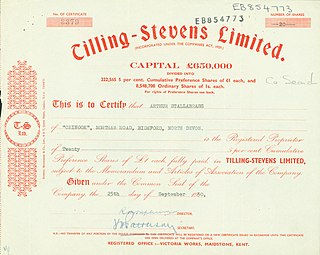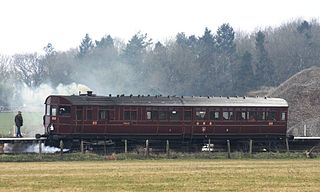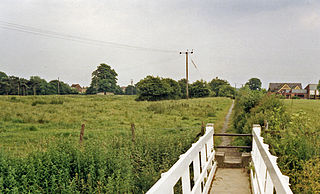
A railcar is a self-propelled railway vehicle designed to transport passengers. The term "railcar" is usually used in reference to a train consisting of a single coach, with a driver's cab at one or both ends. Some railway companies, such as the Great Western, termed such vehicles "railmotors".

In 1933, the Great Western Railway introduced the first of what was to become a successful series of diesel railcars, which survived in regular use into the 1960s, when they were replaced with the new British Rail "first generation" type diesel multiple units.

The British Rail Class 201 six-car diesel-electric multiple units (DEMUs) were built in 1957–1958 at Eastleigh and underframes were built at Ashford.
B-B and Bo-Bo are the Association of American Railroads (AAR) and British classifications of wheel arrangement for railway locomotives with four axles in two individual bogies. They are equivalent to the B′B′ and Bo′Bo′ classifications in the UIC system. The arrangement of two, two-axled, bogies is a common wheel arrangement for modern electric and diesel locomotives.

Tilling-Stevens was a British manufacturer of buses and other commercial vehicles, based in Maidstone, Kent. Originally established in 1897, it became a specialist in petrol-electric vehicles. It continued as an independent manufacturer until 1950, when it was acquired by the Rootes Group.
Dick, Kerr and Company was a locomotive and tramcar manufacturer based in Kilmarnock, Scotland and Preston, England.
The Drewry Car Co. was a railway locomotive and railcar manufacturer and sales organisation from 1906 to 1984. At the start and the end of its life it built its own products, for the rest of the time it sold vehicles manufactured by sub-contractors.
Railmotor is a term used in the United Kingdom and elsewhere for a railway lightweight railcar, usually consisting of a railway carriage with a steam traction unit, or a diesel or petrol engine, integrated into it.

The steam rail motors (SRM) were self-propelled carriages operated by the Great Western Railway in England and Wales from 1903 to 1935. They incorporated a steam locomotive within the body of the carriage.

The Diesel Electric Rail Motor (DERM) was a type of railmotor operated by the Victorian Railways in Australia.
The NZR RM class Westinghouse railcar was an experimental railcar built by the New Zealand Railways Department (NZR) in 1914. Although not the first railcar to operate in New Zealand, it was the first to enter revenue service.

The CPHrail motors were introduced by the New South Wales Government Railways in 1923 to provide feeder service on country branch lines.
The London and North Eastern Railway used a few petrol and diesel locomotives. These included the LNER Class Y11 petrol locomotives, the diesel shunters which later became British Rail Class D3/9 and British Rail Class D3/14 and the Kitson-Still steam diesel hybrid locomotive. During the 1930s, Armstrong Whitworth supplied an experimental 1-Co-1 diesel-electric locomotive and several diesel-electric railcars. In the 1940s, the LNER had twenty-five 1,600 hp main-line diesel locomotives on order. These would have been similar to the British Rail Class D16/1 and British Rail Class D16/2 but the order was cancelled after nationalisation in 1948.

The Cawood, Wistow and Selby Light Railway (CW&SLR) was a short light railway in a rural part of Yorkshire, England. The company was sometimes referred to as the Cawood, Wistow and Selby Railway.

Diesel multiple units and railcars are trains, usually with passenger accommodation, that do not require a locomotive. Railcars can be single cars, while in multiple units cars are marshalled together with a driving position either end. As of December 2010, 23 percent of the rail passenger cars used on Network Rail are part of a diesel multiple unit.
Petrol–electric transmission or gasoline–electric transmission or gas–electric transmission is a transmission system for vehicles powered by petrol engines. Petrol–electric transmission was used for a variety of applications in road, rail, and marine transport, in the early 20th century. After World War I, it was largely superseded by diesel–electric transmission, a similar transmission system used for diesel engines; but petrol–electric has become popular again in modern hybrid electric vehicles.

The South African Railways gas-electric locomotive of 1923 was an experimental gas-electric locomotive. The fuel, suction gas, was generated on-board the locomotive from coal.

Hartlepool railway station was a railway station that served the Headland area of Hartlepool in the ceremonial county of Durham, North East England. Though originally built as the coastal terminus of the Hartlepool Dock & Railway in 1839, for most of its life the station was the terminus of a shuttle service from the town's main station in West Hartlepool.
The 1001 class were a class of ten diesel-electric locomotive built by English Electric and Vulcan Foundry in 1955 for Nigerian Railways along with fourteen for the Gold Coast Railways as their 1000 class. Construction and layout was a very similar to the earlier NZR De class.
An internal combustion locomotive is a type of railway locomotive that produces its pulling power using an internal combustion engine. These locomotives are fuelled by burning fossil fuels, most commonly oil or gasoline, to produce rotational power which is transmitted to the locomotive's driving wheels by various direct or indirect transmission mechanisms. The fuel is carried on the locomotive.













